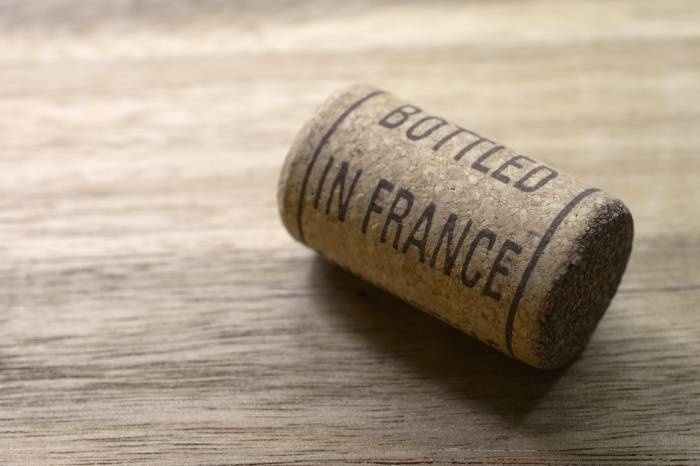French wine exports remain stable in 2025 as value rises despite lower volumes and global consumption decline
Sparkling and bag-in-box wines offset still wine losses while US market growth counters declines in Asia and the UK
2025-08-19

French wine exports have shown notable stability in the first half of 2025, according to data from market consultancy Del Rey AWM. The figures indicate a slight decrease of 1.8% in volume, but a 0.9% increase in value, reaching 628.2 million liters exported for a total of 5.53 billion euros over the six-month period. This trend follows a similar pattern seen throughout 2024, after a difficult 2023 marked by significant losses in volume, partially offset by higher average prices.
Looking at the past seven years, the French wine sector has experienced several shifts. During the pandemic in 2020, monthly export volumes dropped sharply, with losses of up to 36% in April and May. This was followed by a strong recovery between April and June 2021, when monthly growth rates exceeded 60% in value and 20% in volume. However, this surge was corrected over the next two years, with declines lasting until mid-2024. Since then, export levels have stabilized despite a global decline in wine consumption.
Within the different wine categories, sparkling wines and bag-in-box (BiB) formats have helped offset declines in still bottled wines. The overall drop of 1.8% in total export volume represents a loss of 11.4 million liters compared to the previous year. Still bottled wines fell by 16 million liters (down 3.5%), while sparkling wines increased by 5.9% to reach 94 million liters, and BiB wines rose by 8.3% to 27.7 million liters.
Among sparkling wines, those with protected designations of origin (PDO) other than Champagne saw the strongest growth, up nearly 20%, compared to Champagne’s increase of just under 5%. In terms of value, sparkling wines generated an additional 26.6 million euros (+1.5%) for a total of 1.86 billion euros over six months. Still bottled wines remained almost flat at 3.49 billion euros (+0.3%), while BiB wines saw a significant jump of nearly 11%, reaching sales of 86.1 million euros.
The average price per liter for French wine exports increased by 2.7%, now standing at 8.80 euros per liter, though there are large differences between categories. Sparkling wines became slightly cheaper on average (-4.2%) but still command a high price at nearly 20 euros per liter. Still bottled wines rose to an average price of 7.90 euros per liter (+3.9%), and BiB wines reached an average price of just over three euros per liter.
The United States remains the leading market for French wine exports, accounting for more than one-fifth (20.7%) of total export value and absorbing over 14% of export volume. Germany and the United Kingdom follow as key destinations, together with the U.S., making up about 40% of both value and volume exported from France.
In the first half of this year, exports to the U.S. grew by nearly 7% in value and more than 2% in volume, while sales to the U.K. declined by about 3.5% in value and less than one percent in volume. Exports to Germany fell slightly in volume but increased in value due to higher prices.
Sparkling wine exports showed contrasting trends between markets: sales to the U.S. jumped almost 18%, reaching nearly 400 million euros over six months, while exports to the U.K. dropped by almost 13%, losing close to 29 million euros compared to last year.
In Asia, French sparkling wine exports declined sharply to Singapore (a traditional entry point for Japan), South Korea (-24.7%), and China (-28.7%), though sales to Japan rose strongly (+22%). For still bottled wines, exports grew modestly in the U.S., U.K., Germany, and Canada but fell significantly in China (-22% in value and -35% in volume), Hong Kong (-17%), Latvia (-45%), Lithuania (-30%), and Russia (-30%). On the positive side, Canada (+6%), Sweden (+12%), and Ireland (+5%) saw increases.
Two major regulatory changes affected French wine exports this semester: potential new tariffs in the U.S., and new alcohol tax rules in the U.K.
Concerns about higher tariffs under the new U.S administration led to a surge in French wine shipments late last year and continued strong growth into May and June this year after a confirmed tariff increase of ten percent on all European wines.
In contrast, new alcohol taxes introduced in February in the U.K.—which particularly affect red wines with higher alcohol content—did not have a clear negative impact on French wine exports during this period. After sharp declines from mid-2022 through mid-2024, French wine shipments to the U.K have stabilized since August last year.
Overall, despite ongoing challenges such as falling global wine consumption and shifting international regulations, France’s wine export sector has managed to maintain stable performance so far this year through strategic market focus and product diversification.
Founded in 2007, Vinetur® is a registered trademark of VGSC S.L. with a long history in the wine industry.
VGSC, S.L. with VAT number B70255591 is a spanish company legally registered in the Commercial Register of the city of Santiago de Compostela, with registration number: Bulletin 181, Reference 356049 in Volume 13, Page 107, Section 6, Sheet 45028, Entry 2.
Email: [email protected]
Headquarters and offices located in Vilagarcia de Arousa, Spain.